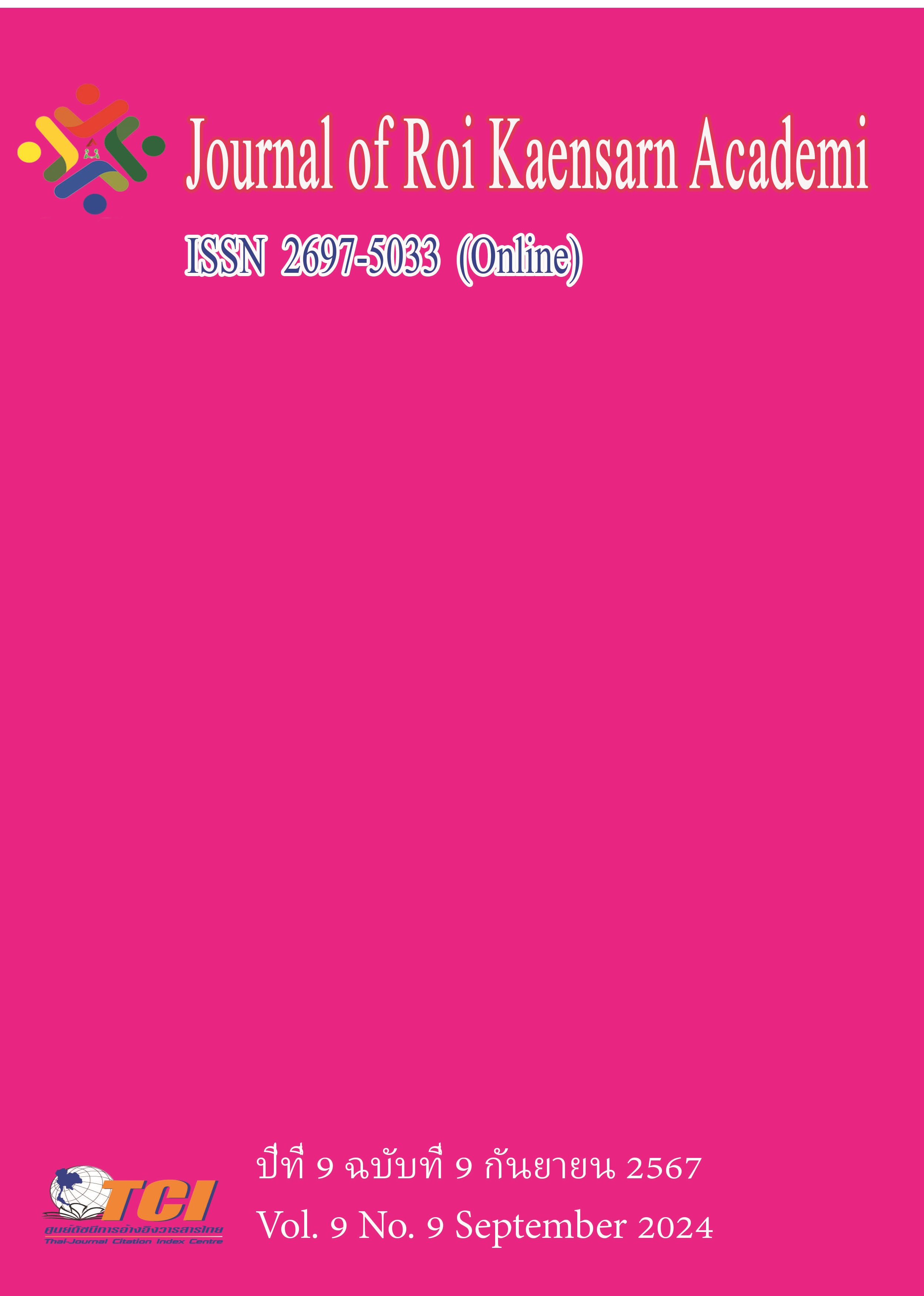Educational Human Resource Allocation Model For Art Major In Private Universities Under Liaoning Province
Main Article Content
บทคัดย่อ
Background:Optimize resource allocation in Liaoning’s private universities for art education, enhance educational quality, boost cultural industry prosperity, strengthen cultural soft power, and promote sustainable development of art education.
Aims:(1) to determine the components and indicators of educational human resource allocation of art major in private universities under Liaoning Province; (2) to develop the model of educational human resource allocation of art major in private universities under Liaoning Province; and (3) to put forward the guidelines for improving educational human resource allocation of art major in private universities under Liaoning Province.
Methodology:(1) to determine the components and indicators of educational human resource allocation of art major in private universities under Liaoning Province; (2) to develop the model of educational human resource allocation of art major in private universities under Liaoning Province; and (3) to put forward the guidelines for improving educational human resource allocation of art major in private universities under Liaoning Province.
Results:(1) There were five components and 20 key variables of the human resource model of art major in private universities under Liaoning Province, which consisted of Teacher Recruitment, Teacher Training, Performance Management, Compensation System, and Career Development Planning; (2) Model validation of five components were founded and model fit with empirical data for all indicators; and (3) There were 8 guidelines of educational human resource allocation of art major in private universities under Liaoning Province.
Conclusion:The study identified 5 components and 59 indicators of human resource allocation in art education at private universities in Liaoning through literature review and semi-structured interviews with key informants. A quantitative questionnaire revealed a valid and reliable model for human resource allocation in art education, encompassing 5 components with 20 indicators, including teacher recruitment, training, performance management, compensation, and career development. Based on findings, “Guidelines for improving Human Resource Allocation of Art Majors in Private Colleges and Universities in Liaoning Province” were compiled, outlining 8 principles for effective resource allocation, focusing on career development, compensation, performance management, and teacher recruitment and training.
Article Details
เอกสารอ้างอิง
Cao, S. (1986). Some Issues in University Quality Assessment. Higher Education Research, (12), 45.
Chen, L. (2019). Research on the Open Discussion Mechanism in Universities. Science Press.
Chen, Y. (2015). Evaluation of the Current Status and Constraint Mechanism of Resource Allocation in Higher Education. Xi’an University of Architecture and Technology.
Derek D. Wang. (2019). Performance-based resource allocation for higher education institutions in China. Socio-Economic Planning Sciences, 65, 66-75.
Ehrenberg, R. G. (2012). American Higher Education in the Twenty-First Century: Social, Political, and Economic Challenges. Johns Hopkins University Press.
Evans, L. (2018). Professors as Academic Leaders: Expectations, Enacted Professionalism and Evolving Roles. Bloomsbury Publishing.
Fang, Y. (2015). Research on Human Resource Allocation in Private Undergraduate Colleges. West China University.
Fu, Z. (1994). Strengthening and Improving Macroeconomic Management to Guide Public University Education. Chinese Higher Education Research, (12), 23-27.
Huang, Y. (2019). Research on the Incentive Mechanism for University Faculty. Shanghai Jiao Tong University Press.
Li, H. (2019). Research on the Recruitment Strategies of University Scientific Research Personnel. Science Press.
Li, N. (2016). Research on the Recruitment and Selection Mechanism for Auxiliary Staff in Universities. Education Science Press.
Liu, J. (2019). Research on Resource Allocation Efficiency in Higher Education in Eastern China. Shandong University of Finance and Economics.
Liu, W. (2021). Research on Resource Allocation Efficiency in Higher Education in Northeast China. Liaoning University.
Qing, L. (2004). Deepening the Understanding of Labor and the Theory of Labor Value and Its Basic Conclusions. Hunan Social Sciences, 2004 (02).
Ramsden, P. (2003). Learning to Teach in Higher Education. Routledge.
Shi, Q., & Liu, W. (2006). Research on the Evaluation Indicator System of Private Higher Education Institutions in China. Shaanxi People’s Publishing House.
Stephan, P. (1996). The Economics of Science. Journal of Economic Literature, (3), 1199-1235.
Stephan, P. (2012). How Economics Shapes Science. Harvard University Press.
Wang, L. (2017). Research on University Scientific Research Project Management and Support. Education Science Press.
Wu, D., & Li, X. (2007). An Inventory of Chinese Higher Education in 2006. Higher Education Research, (2), 1-10.
Xu, X. (2007). Actively Conducting University Research to Promote the Healthy Development of Private Higher Education Institutions. Higher Education Research, (6), 53-57.
Zhang, S. (2021). Study on Interprovincial Differences in Resource Allocation in General Higher Education in China from the Perspective of Educational Equity. Liaoning University.
Zhao, N. (2018). Research on University Welfare Policy. People’s Education Press.

